Estimated reading time: 7 minutes
The gun industry is full of fads, and I don’t mean that in a bad way. A few years past, everything was M-LOK and operators, but slowly the retro rifle fad has taken over. It’s on its way out the door now, but it was a good ride. That Retro rifle wave is how I ended up with a replica M16A1 made from an LRB M16A1 lower and mostly Colt surplus parts. At the peak of M-LOK and operating, someone decided retro was the way to go.
At this point, most of this generation had likely been more than exposed to modern rifles, and some were likely curious about what it was and how much it had changed. That’s what lead me to build this gun. That and the fact someone sold an LRB lower for a song. LRB is a neat company. They are the masters of the M14.
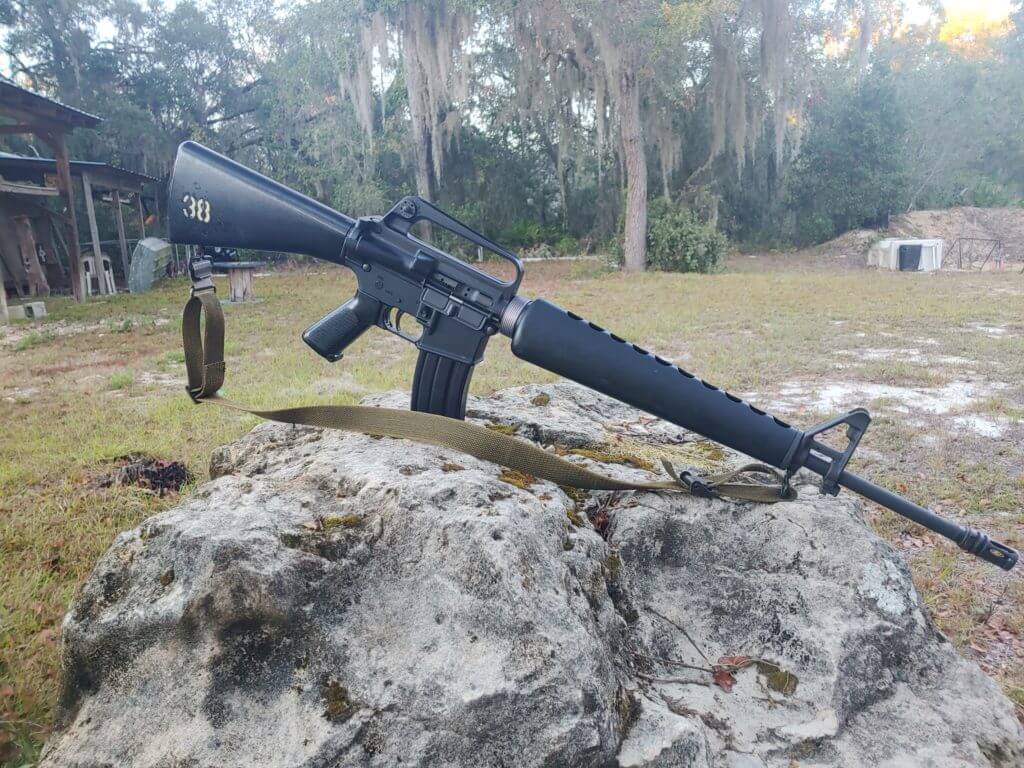
Some years ago, they did a limited run on retro-inspired lowers. I believe it was 2009, well before the rage of retro rifles was in full swing. Finding this lower inspired me to build something as close to an A1 as I could. One of the best things about guns is that they can allow you to have a real, first-person view of history and to experience how things have changed with your bare hands.
The LRB M16A1 and My Generation
A long time, and about fifty pounds ago, I was issued an M16A2 and later an M16A4. I’ve got a base of experience with more modern variants but no understanding of how the retro M16A1s felt or handled. I might be thick-headed because you can tell me something all day long, but until I get hands-on experience, I don’t feel like I’ve learned anything.
Building, shooting, and enjoying this LRB/Colt M16A1 parts gun has allowed me to learn and experience what went right with the modern M16 and what they should have left well enough alone. I was also able to experience a very small part of what generations of soldiers and Marines previously experienced.
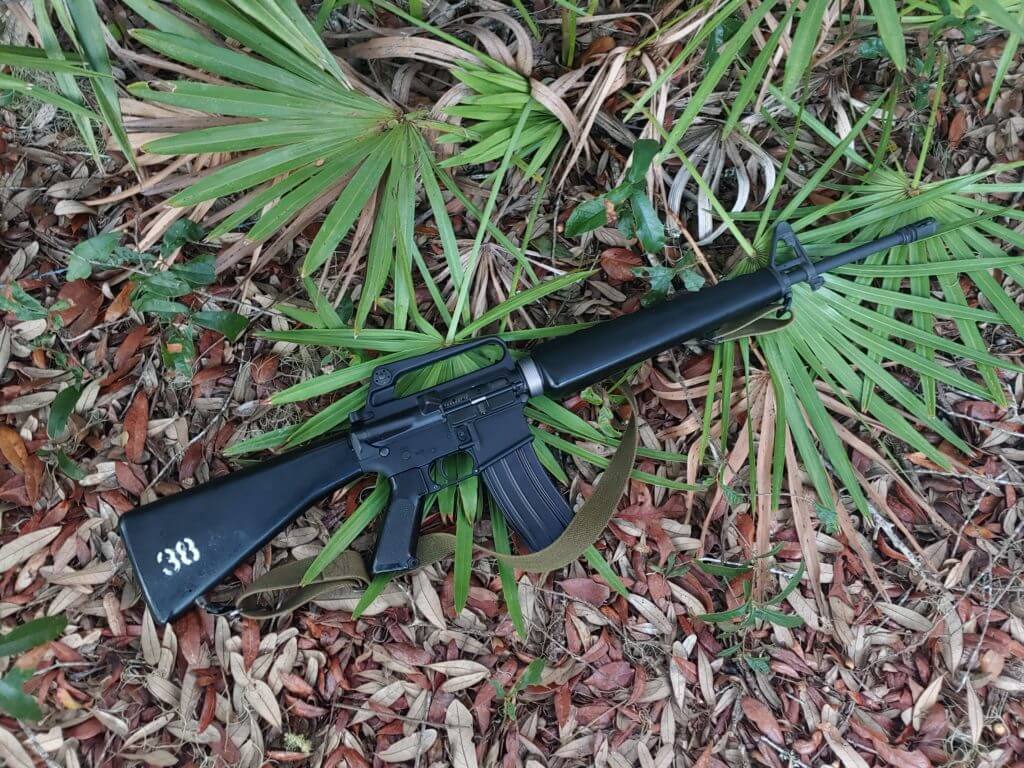
The difference between the old A1 and A2/A4 is night and day. Sure, they are both Stoner designs, but the changes are fairly large. First and foremost, it seems like the military took what was a fairly lightweight rifle and really beefed it up.
Going from an A4 or A2 to an A1 is quite the leap when it comes to weight. The M16A1 is a much better-balanced rifle that’s lighter. None of that useful government profile barrel and the A4’s rail is handy, but it does put the rifle off balance.
The Rear End
On the opposite end, the M16A1 used a shorter LOP that made the rifle more comfortable to use. Back in the day, a bladed stance was standard, but with a modern squared-up stance, the shorter one delivers a weapon that’s easier to manage.
I’m a big guy, but I remember my average-size compatriots struggling to reach anywhere beyond the magwell for a forward grip when shooting an A4 with body armor on. The M16A1 had a length of pull 1 ⅝ inch shorter than the A2 and subsequent A4.
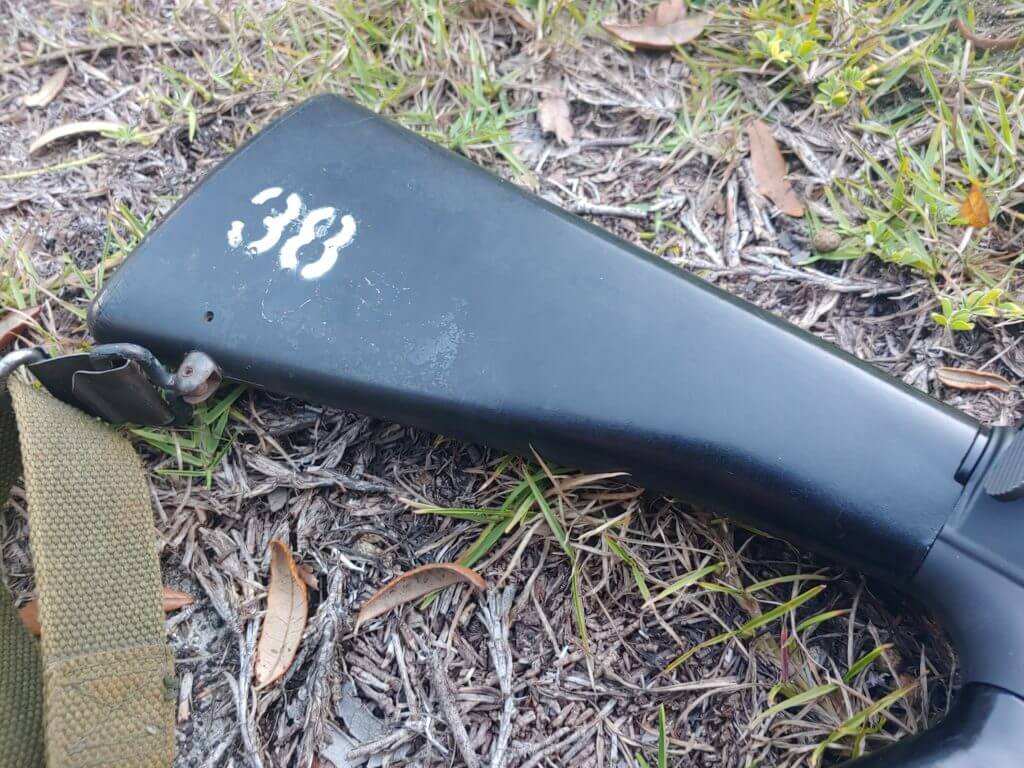
The end of the stock lacks any texture, and it does feel a bit slippery on the shoulder. This makes it pretty clear why the A2 and beyond utilized a meat tenderizer texture on the stock.
I can see why the first soldiers’ impressions of the M16 series involved the Mattel company. The plastic furniture does feel somewhat cheap and flimsy. It’s thin, and I feel like if I butt-stroked someone in the face, the stock would break. The triangular handguard doesn’t inspire awe either.
I do prefer the nub-free pistol grip. It’s clear no one liked the nub since every major company now produces a straight, nub grip-free grip these days.
Sighting In
The A2 sights were quite fancy and fairly complicated. They are good sights for sure, but somewhat complicated for your standard infantryman. Not that they couldn’t learn how to use an A2 sight, but that the adjustments and design were fantastic for the field. Who, in the middle of a firefight, is making these finely-tuned adjustments? Its marksman sights on an infantry rifle.
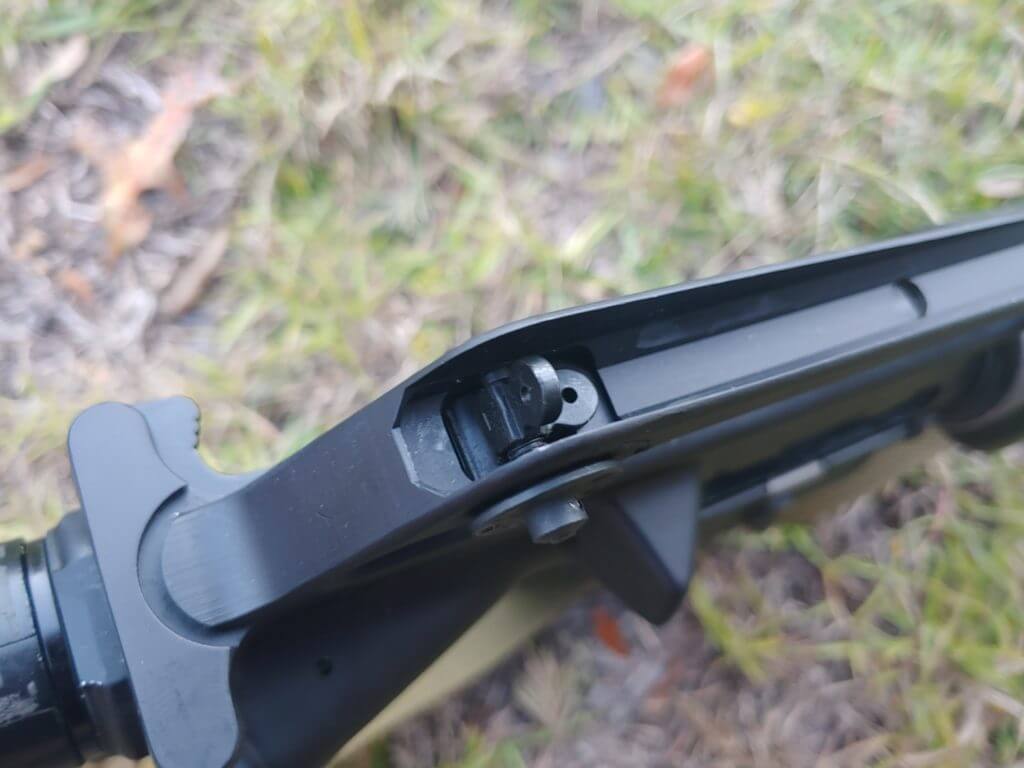
The A1 sights are much simpler and easier to use. They feature a small and large aperture, and the adjustments are bog standard. Most modern companies use a simplified sighting system, not too unlike the original A1 sights.
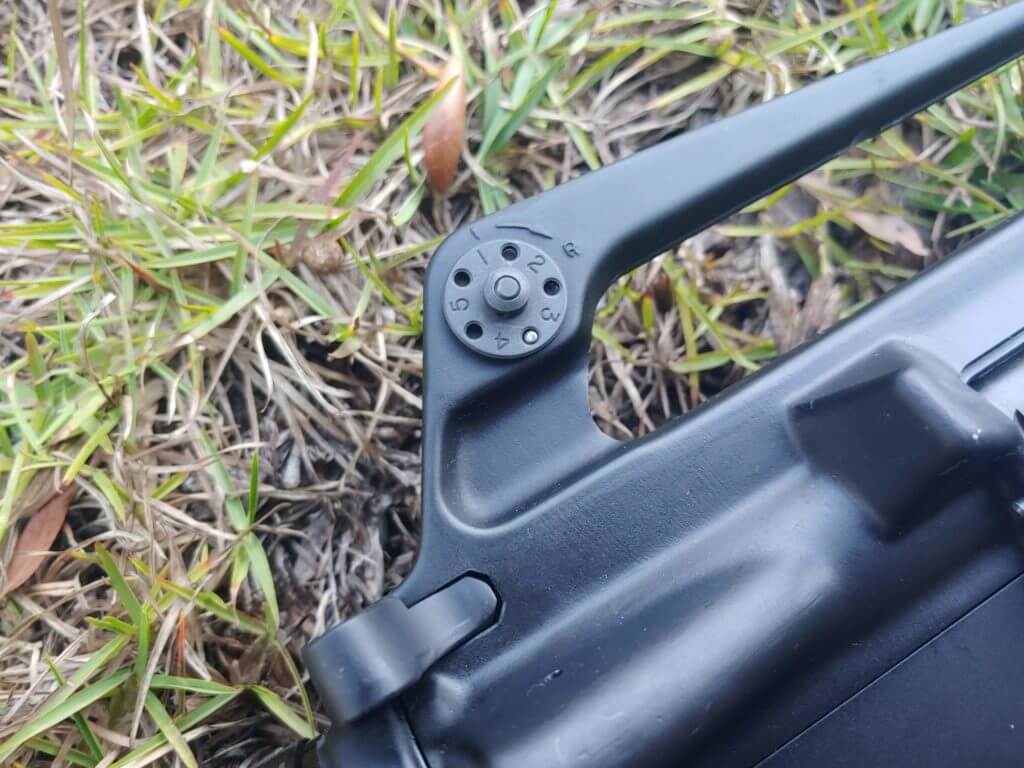
To me, these are a better option for infantry sights and are less likely to get shifted in the field.
At the Range With my Mock M16A1
My favorite ARs have 20-inch barrels and rifle-length gas systems. This is how the rifle was designed, and it shows. Not only do we get better ballistic performance from the longer barrel, but we also get a much smoother shooting gun. The longer gas system results in a less violent system with significantly reduced recoil and less wear on parts.
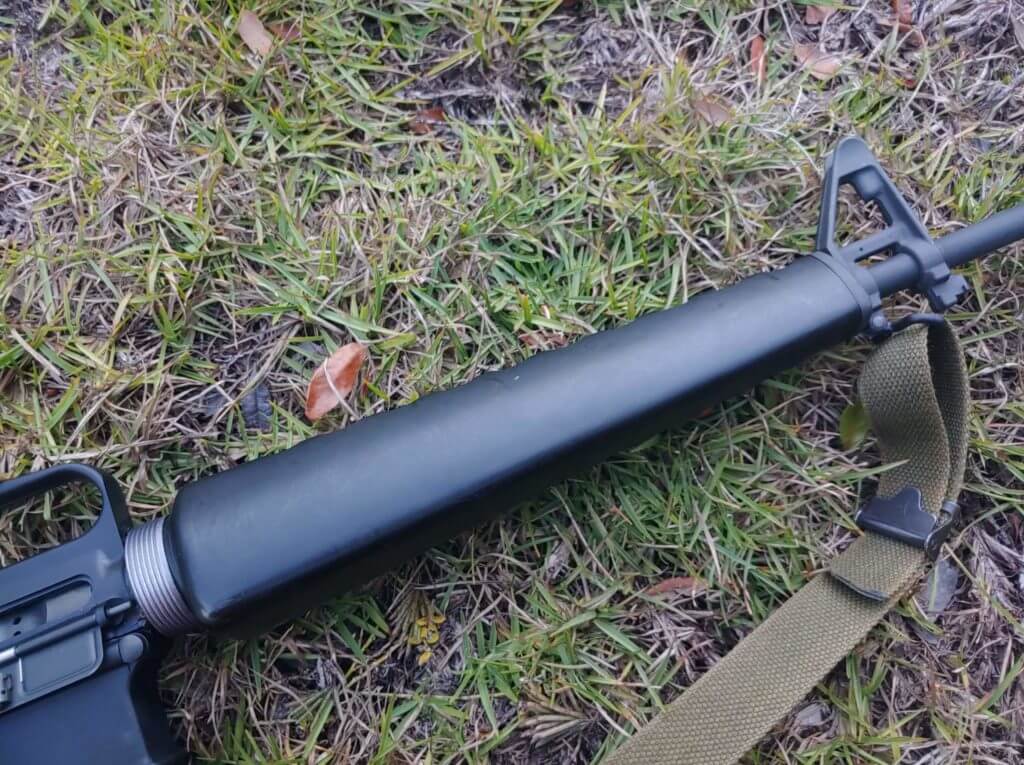
Muzzle rise is cut, and the gun barely barks between shots. It just moves a bit, mostly rearward. The longer gas system and barrel help, as does the OG A1 birdcage flash suppressor. It helps act as a compensator as well as a flash hider. Shooting a rifle-length AR is best described as buttery smooth.
The platform is plenty accurate, and the simpler iron sights are more than enough to hit targets near and far. Even at 200 and 300 yards, you could ping a steel IPSC target in a good supported prone position. It’s easy to forget your competency with iron sights, so it might have taken some practice, but at the end of a long day, I heard ding a lot more than I wasn’t.
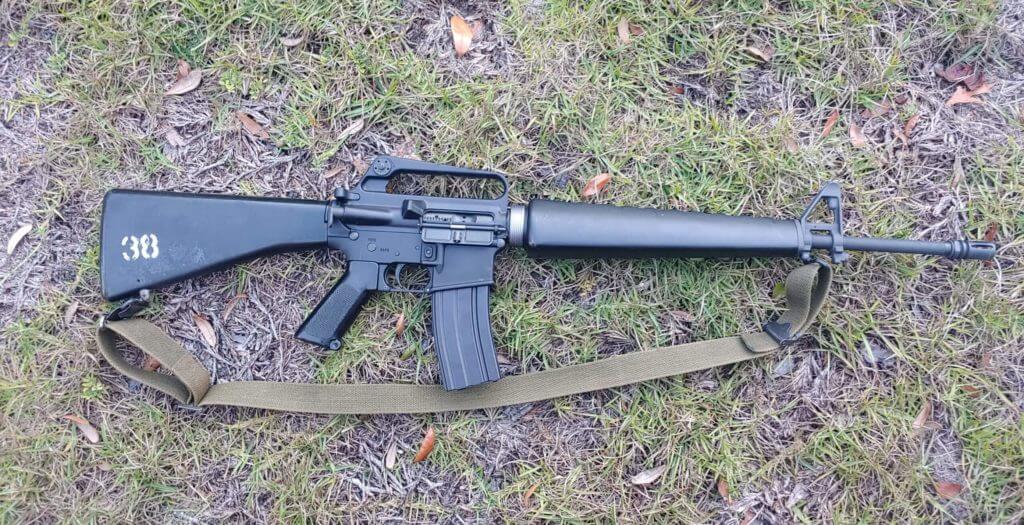
I’m also positive spending that a good deal of time with iron sights has made me a better shooter with optics. I plan to keep my skills somewhat sharp with irons. I get a lot more satisfaction from hitting targets with irons than optics.
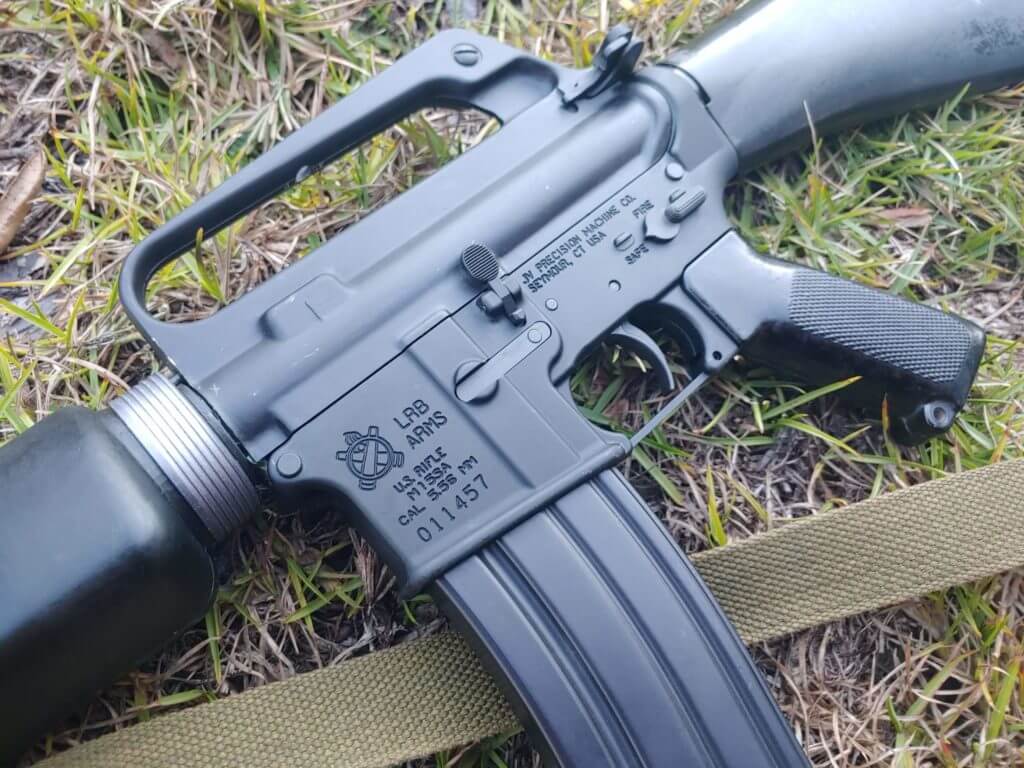
The gun was also reliable. Mostly because I wasn’t shooting ammo backed by the wrong propellant and had a cleaning kit. In reality, the gun didn’t choke with brass or steel-cased ammo.
Old School Cool
The M16A1 clone delivered an experience different than any other I’m used to. I might have learned to use irons in boot camp, but that was a long time ago. This rifle allowed me to experience what the M16A1 was and really experience how much it changed. If we had blended some of the features of the A1 with the A2, we could have gotten a helluva rifle.
If you haven’t tried one of these retro rifles, do yourself a favor and give one a spin. Experience history firsthand, in hand.
*** Buy and Sell on GunsAmerica! All Local Sales are FREE! ***